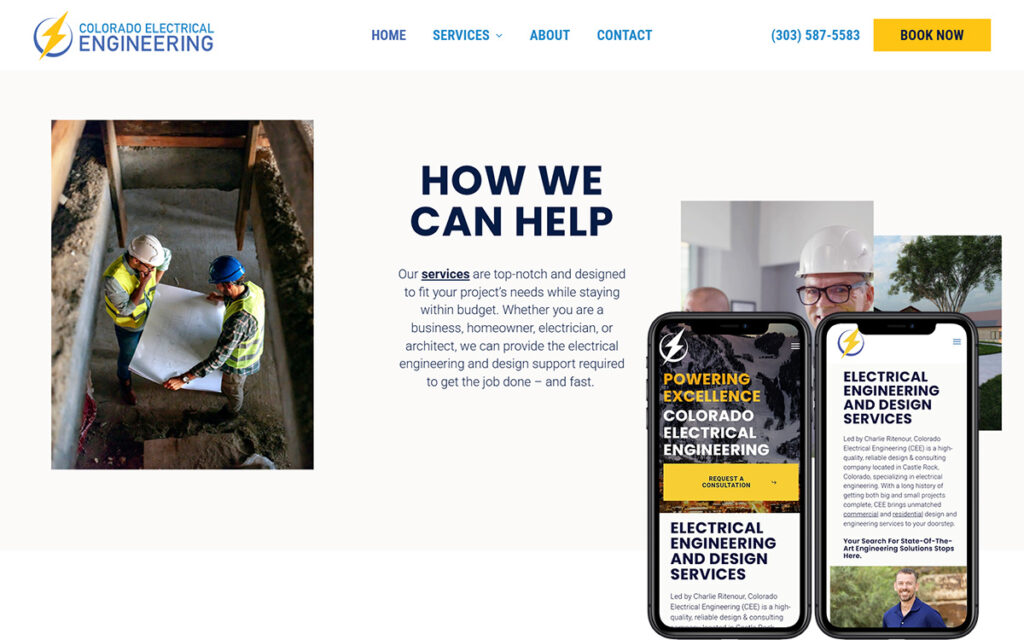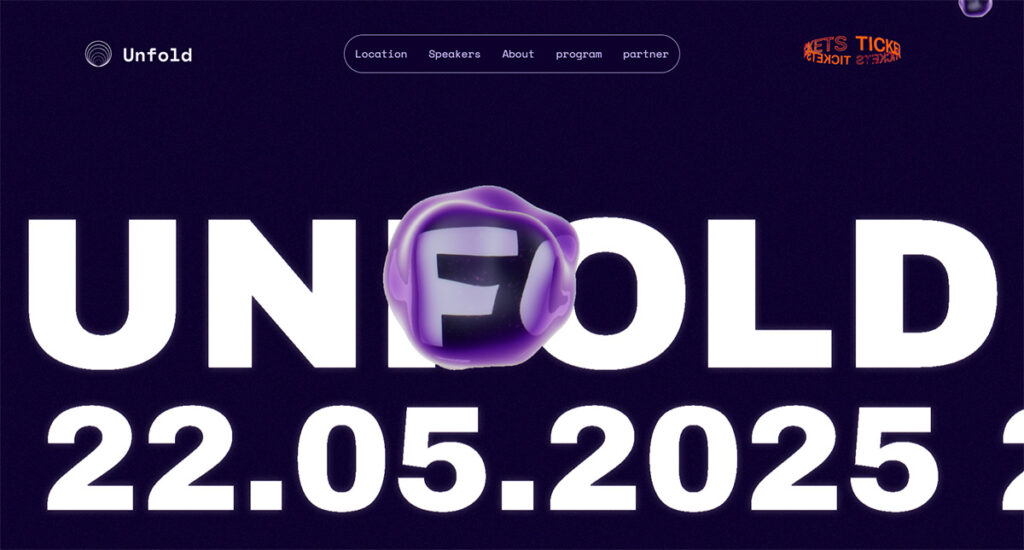Web Design Trends to Watch in 2025

Emma’s online boutique thrived when she launched in 2016. Back then, her website was sleek and modern. But as eCommerce evolved—her site stayed the same.
Sales dipped. Customers abandoned carts. Feedback revealed why: slow load times, clunky navigation, and a tedious checkout process.
A quick redesign using modern web trends—mobile optimization, simplified checkout, and speed—brought sales back up.
The takeaway? In eCommerce, an outdated website isn’t just a minor inconvenience—it’s lost revenue. Keeping up with web design trends isn’t about looking good; it’s about staying competitive.
10 Growing Trends Web Designers Should Consider
Technology is changing—there’s no stopping that, and with it comes changes in how consumers are using the internet. That means that web designers need to evolve with technology. So, what growing trends should web designers consider in projects for 2025 and beyond?
1. Minimalist Web Design with a Modern Touch
Minimalism in web design is still going strong, but it’s evolved. Clean layouts, easy-to-read fonts, and smart use of whitespace are still key. We’re also seeing interactive 3D graphics, subtle motion effects, and augmented reality (AR) bringing websites to life without overwhelming visitors.
Nobody likes a cluttered site, and 88% of users are less likely to return to a site with poor user experience. Businesses focused on digital marketing can use these trends to keep their brand message front and center.

2. Flexible and Scalable Typography
Fonts are more than just decoration—they play a massive role in how easy your website is to read. Variable fonts offering multiple styles and weights in one file are a big deal now. They make websites load faster and look sharper on any screen.
Pairing modern serifs with sleek sans-serifs is a great way to grab attention while keeping things professional. First impressions happen fast—users form an opinion about a website in just 0.05 seconds—so choosing the right typography is crucial.

Image from Unfold Event
3. Engaging Animations & Micro-Interactions
A little movement goes a long way. Micro-animations, scroll-triggered effects, and hover interactions make browsing more enjoyable without distracting from the content. People respond well to interactive elements. These design choices aren’t just about looks; they can also help improve engagement and impact conversion rates.
4. AI-Powered Personalization & Smart Chatbots
AI is changing the way websites interact with visitors. Now, websites can adjust content based on browsing behavior, offering personalized content and recommendations and AI-driven chatbots that feel more natural and helpful.
Seventy-four percent prefer using chatbots to find answers to straightforward questions, making them a smart addition to any website. AI-driven SEO services can also analyze search trends and user behavior to improve rankings and visibility.

Image from COREtec Floors
5. AR, VR, and 3D Graphics for Interactive Experiences
Websites are no longer just static pages. AR previews, interactive 3D models, and virtual showrooms let customers engage with products in ways that weren’t possible before. Roughly 61% of shoppers have stated that they prefer retailers with AR experiences. At the same time, 71% indicated they would shop more often if they utilized AR, demonstrating how valuable this feature has become.
6. Short-form & Interactive Video Content
Video remains dominant, but the emphasis shifts to short-form, interactive clips that convey information rapidly. Websites are utilizing 10–to 60-second videos to emphasize key messages, with some allowing users to click within the video for further exploration. Ninety percent of marketers report that video provides a strong return on investment, making it essential for any brand’s strategy.
Social media has also fueled the demand for short, engaging videos, with platforms like Instagram Reels, TikTok, and YouTube Shorts setting new expectations for content consumption. Users are more likely to engage with brands that deliver quick, visually appealing messages, and businesses that embrace this trend will see higher engagement rates.
Stories, live streams, and interactive video features have become essential tools for keeping audiences engaged and encouraging conversions. As social media evolves, websites should consider integrating these formats into their video strategies to stay relevant and capture attention more effectively.
7. Web Accessibility is a Priority
Accessibility isn’t just an extra feature—it’s essential. Websites need to be easy to navigate for everyone, including those using screen readers or voice commands.
High-contrast text, keyboard-friendly navigation, and voice control compatibility are just a few of the key features modern websites need to include.
With 1.3 billion people worldwide experiencing some form of disability, ensuring your site is accessible helps expand your reach and avoid potential legal issues.
8. Mobile-First Design with Faster Performance
With roughly 62.69% of global web traffic coming from mobile devices, designing for smaller screens first is the way to go. Adaptive layouts, responsive fonts, and touch-friendly buttons ensure a seamless experience. Google’s Core Web Vitals now prioritize fast load times and smooth interactions, and 53% of mobile users leave a site if it takes more than 3 seconds to load.

9. Sustainable Web Design & Energy Efficiency
Sustainability isn’t just about physical products—it applies to websites, too. Efficient coding, optimized images, and green hosting solutions reduce a website’s environmental impact. The internet contributes approximately 3.7% of global carbon emissions, so businesses are looking for ways to reduce their digital footprint.
Beyond hosting and coding optimizations, sustainable web design also includes:
- Reducing unnecessary data transfers by minimizing heavy scripts and optimizing website assets.
- Limiting excessive animations to decrease power consumption and improve load speed.
- Optimizing media files by compressing images, using next-gen formats like WebP, and implementing lazy loading.
- Implementing static site generation (SSG) to serve lightweight, pre-built pages instead of dynamically generated ones.
- Using progressive web apps (PWAs) to cache data and reduce repeated downloads, cutting down on server requests.
- Green hosting solutions that run on renewable energy lowers web servers’ carbon footprint.
- Encouraging responsible UX design by avoiding deceptive practices (dark patterns) that lead users to take unnecessary actions or load excessive pages.
10. SEO-Integrated Design for Better Visibility
Google now prioritizes user experience, mobile optimization, and accessibility when ranking websites. That means good web design isn’t just about looks—it’s about performance, too. Structured data, fast-loading pages, and AI-powered testing help sites rank higher and attract more visitors.
Websites optimized for Core Web Vitals have a lower bounce rate, meaning users stay longer and engage more. With the rise of AI Overviews (AIO) and Generative Engine Optimization (GEO), web design needs to focus on high-quality content that search engines can quickly analyze. Businesses specializing in digital marketing should ensure their web strategies align with these search trends.
Stay Ahead in 2025 with a Smart Web Design Strategy
Staying ahead of web design trends ensures your site remains fast, user-friendly, and visually appealing. Whether you’re interested in AI-driven personalization, mobile-first design, or sustainable website practices, now’s the time to make updates.
Need help updating your web design? Contact us today to learn how we can help.